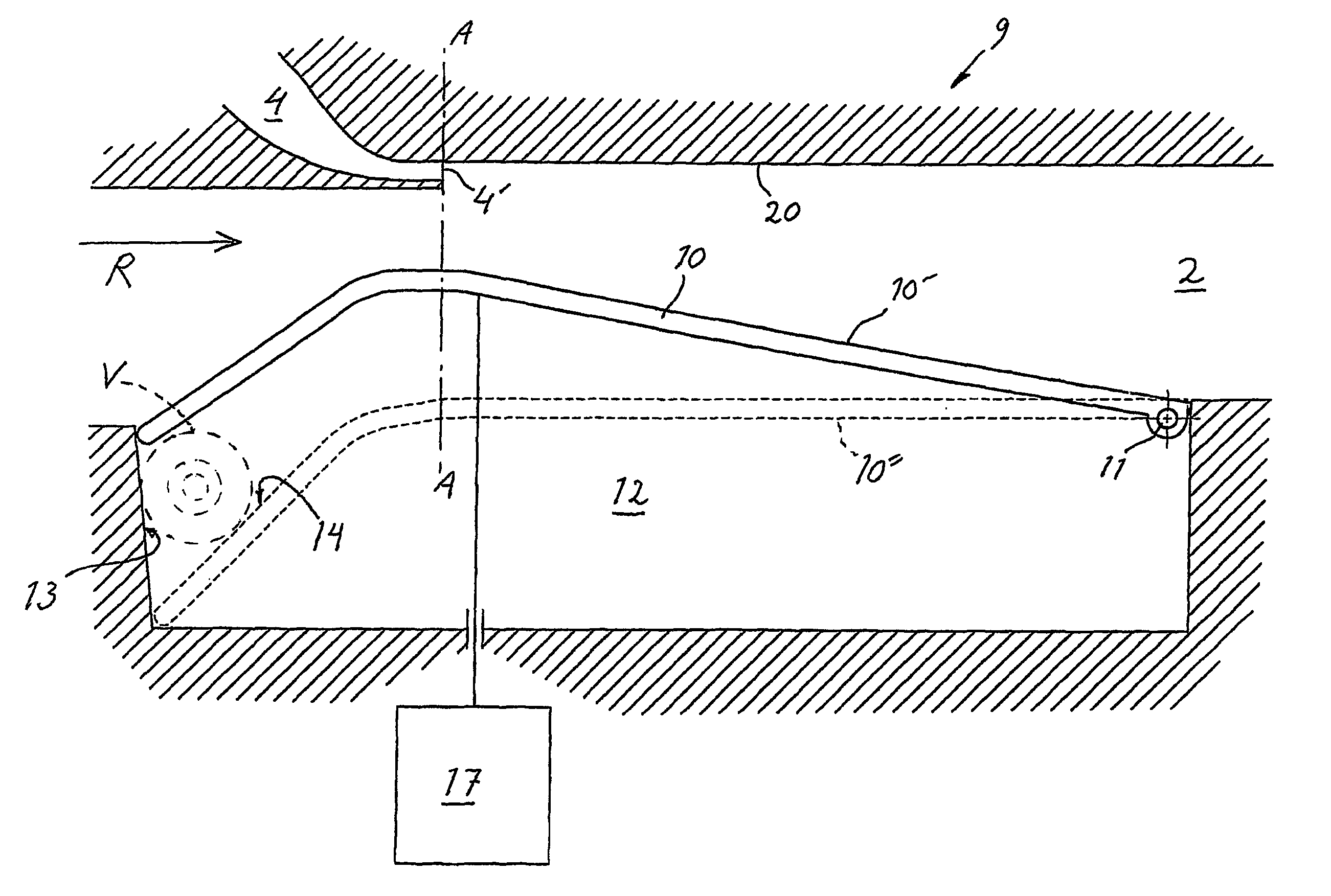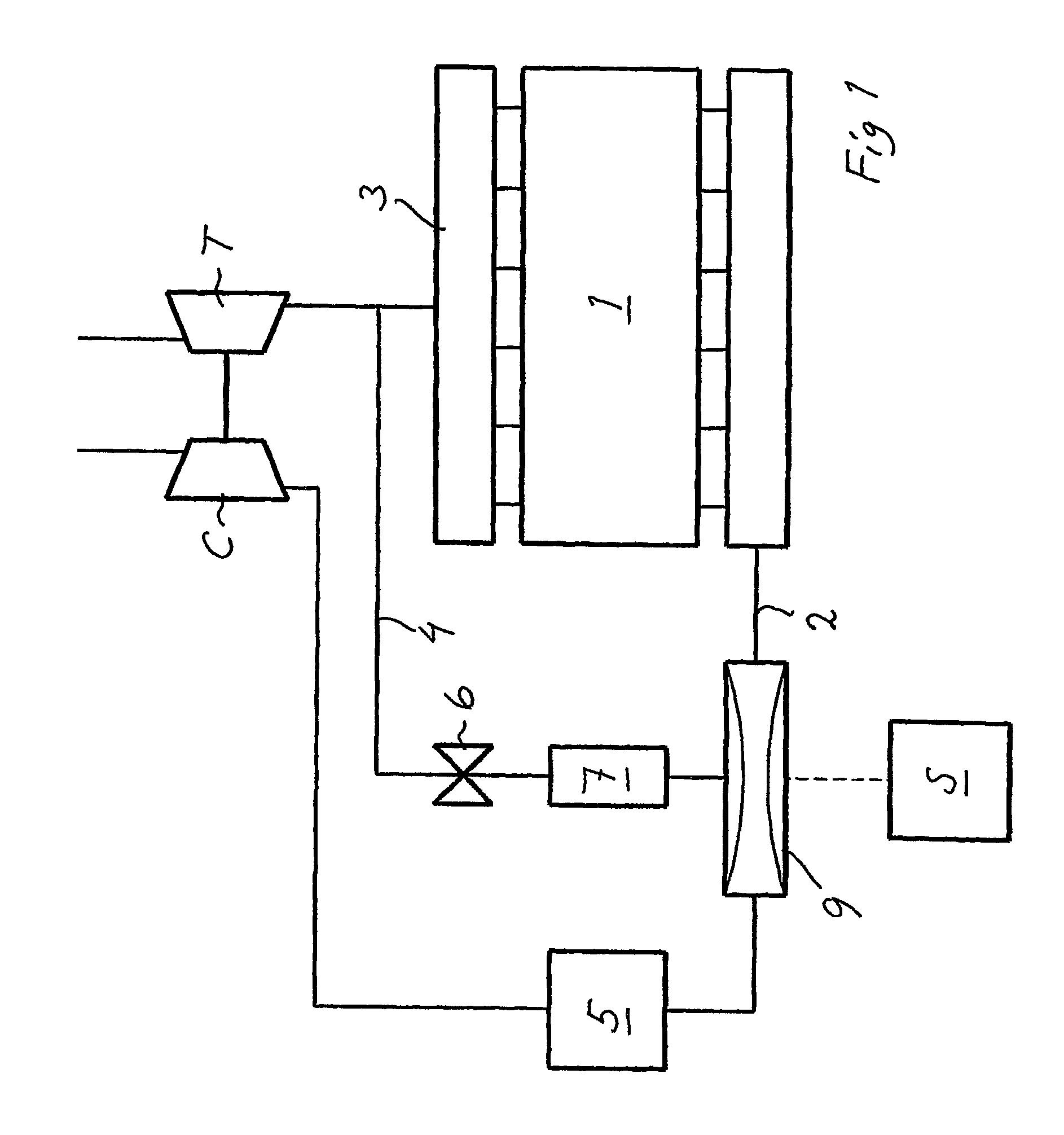Method and device for exhaust recycling and supercharged diesel engine
a diesel engine and exhaust technology, applied in the direction of machines/engines, mechanical equipment, combustion-air/fuel-air treatment, etc., can solve the problems of ineffective technology, inapplicability of otto engine solutions to diesel engines, and combustion in diesel engines normally occurs with excess air, so as to reduce the pumping effect and simple construction
- Summary
- Abstract
- Description
- Claims
- Application Information
AI Technical Summary
Benefits of technology
Problems solved by technology
Method used
Image
Examples
Embodiment Construction
[0023]FIG. 1 shows diagrammatically a combustion engine 1 of the piston engine type with cylinders arranged in a straight inline cylinder block. The engine is a four-stroke diesel engine adapted for a heavy vehicle such as a truck or a bus. Each cylinder is in its respective cylinder head in a conventional manner provided with at least one intake valve for supply of combustion air and at least one exhaust valve for discharge of exhaust gases from the combustion. An intake channel 2 leads the intake air to the cylinders whereas an exhaust collector 3 leads the exhaust gases from the cylinders to the turbine T and subsequently to the exhaust pipe.
[0024]Further, a transfer channel 4 is arranged for recycling EGR gases from the exhaust side of the cylinders to their intake side. The transfer channel 4 debouches in the intake channel 2 after a charging air cooler 5 and before a manifold to the cylinders. An EGR control valve 6 is positioned in the transfer channel whereby the transfer ma...
PUM
 Login to View More
Login to View More Abstract
Description
Claims
Application Information
 Login to View More
Login to View More - R&D
- Intellectual Property
- Life Sciences
- Materials
- Tech Scout
- Unparalleled Data Quality
- Higher Quality Content
- 60% Fewer Hallucinations
Browse by: Latest US Patents, China's latest patents, Technical Efficacy Thesaurus, Application Domain, Technology Topic, Popular Technical Reports.
© 2025 PatSnap. All rights reserved.Legal|Privacy policy|Modern Slavery Act Transparency Statement|Sitemap|About US| Contact US: help@patsnap.com



